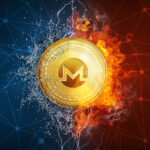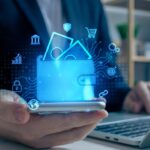The concept of the metaverse has gained significant attention in recent years, fueled by advancements in technology and a growing interest in virtual worlds. One of the virtual worlds at the forefront of this movement is Decentraland, a blockchain-based platform that has garnered a considerable following and investment. But is Decentraland truly the metaverse, as it’s often touted to be? In this article, we’ll explore what the metaverse is, examine the features and characteristics of Decentraland, and discuss whether it can live up to the lofty expectations of being the metaverse.
Understanding the Metaverse
The term “metaverse” was coined by Neal Stephenson in his 1992 science fiction novel “Snow Crash.” It refers to a virtual universe or collective virtual shared space, typically facilitated by the internet and various digital technologies. In the metaverse, users can interact with each other and the environment through digital avatars, engage in various activities, create content, and even build their virtual economies.
Key Characteristics of the Metaverse
Before evaluating whether Decentraland fits the definition of the metaverse, let’s identify some of the key characteristics commonly associated with this concept:
Interconnected Virtual Worlds: In the metaverse, multiple interconnected virtual worlds or environments exist, allowing users to seamlessly move between them. These worlds can be diverse, ranging from futuristic cities to fantasy realms.
User-Created Content: Users are not just consumers but active participants in shaping the metaverse. They can create and contribute to the virtual environment, including building structures, designing landscapes, and crafting unique experiences.
Economy: A thriving virtual economy exists within the metaverse, with digital assets, currencies, and goods that can be bought, sold, and traded. This economy often mirrors real-world economic principles.
Social Interaction: The metaverse fosters social interaction through avatars, chat systems, and other communication tools, allowing users to form connections, collaborate, and socialize.
Scalability: A true metaverse has the potential for unlimited scalability, accommodating a vast number of users and experiences without becoming overcrowded or experiencing significant performance issues.
Decentraland: A Closer Look
Decentraland, launched in 2017, aims to create a decentralized virtual world that embodies many of the characteristics associated with the metaverse. Let’s delve into Decentraland’s features to evaluate its metaverse potential:
Blockchain Foundation: Decentraland is built on the Ethereum blockchain, which ensures transparency, security, and ownership of digital assets within the platform. This blockchain foundation allows users to buy, sell, and trade digital land parcels and other assets using MANA, Decentraland’s native cryptocurrency.
User-Generated Content: Decentraland provides users with a sandbox environment where they can create and develop virtual experiences, including games, art galleries, and social hubs. Users can purchase virtual land parcels on which to build, customize, and monetize their content.
Virtual Ownership: One of Decentraland’s defining features is the concept of virtual land ownership. Users can buy, sell, and trade parcels of land in the virtual world, giving them a sense of ownership and control over their virtual properties.
Social Interaction: Decentraland offers opportunities for social interaction through avatars and chat systems. Users can attend events, interact with others, and engage in a variety of activities, creating a sense of community within the platform.
Digital Economy: Decentraland has its own digital economy with the MANA cryptocurrency as the primary means of exchange. Users can purchase virtual assets, goods, and services using MANA, and creators can monetize their content through various means, such as charging admission fees or selling virtual items.
Scalability: While Decentraland has seen significant growth, it faces challenges in terms of scalability. The platform’s scalability relies on the underlying Ethereum blockchain, which has faced issues with congestion and high transaction fees during periods of high demand. However, Decentraland has been working on solutions to address these challenges.
Is Decentraland the Metaverse?
Now that we have examined the features of Decentraland, we can revisit the question: Is Decentraland the metaverse?
Decentraland certainly possesses some of the key characteristics associated with the metaverse. It offers a blockchain-based platform with user-generated content, a virtual economy, social interaction, and a sense of ownership. Users can buy, sell, and create digital assets and experiences within the platform, which aligns with the metaverse concept.
However, Decentraland also has limitations that prevent it from fully embodying the metaverse vision. These limitations include:
Interconnected Worlds: Decentraland primarily focuses on a single virtual world divided into parcels of land owned by users. While it allows for a wide range of content creation, it lacks the seamless interconnectedness of multiple virtual worlds, a hallmark of the metaverse.
Scalability Challenges: As mentioned earlier, Decentraland faces scalability challenges due to its reliance on the Ethereum blockchain. High transaction fees and network congestion can hinder the platform’s growth and accessibility.
Niche Audience: Decentraland appeals to a specific audience, primarily those interested in blockchain technology, digital assets, and virtual land ownership. This limits its reach compared to a true metaverse, which aims for broad appeal across various demographics.
Economic Complexity: While Decentraland’s digital economy is a significant feature, it may be perceived as complex and inaccessible to some users. A true metaverse should strive for simplicity and user-friendliness in its economic interactions.
In conclusion, Decentraland represents a significant step toward the realization of the metaverse concept. It incorporates blockchain technology, user-generated content, a virtual economy, and social interaction, all of which are key elements associated with the metaverse.
However, Decentraland is not the metaverse in its entirety. It lacks some essential features, such as interconnected virtual worlds and seamless scalability, that are necessary for a comprehensive metaverse experience. Furthermore, its appeal is somewhat limited to a niche audience interested in blockchain and digital asset ownership.
While Decentraland serves as a promising and innovative virtual world, it is just one piece of the larger metaverse puzzle. The true metaverse, if it ever comes to fruition, will likely be a more expansive and interconnected digital realm that caters to a broader spectrum of users and experiences. Decentraland’s development and growth will be interesting to watch as it continues to evolve in pursuit of the metaverse ideal.
The Future of Decentraland and the Metaverse
Decentraland’s journey towards becoming a more complete metaverse is ongoing, and it’s essential to consider how it may evolve in the future and contribute to the broader metaverse ecosystem.
Interconnectedness: To move closer to the metaverse ideal, Decentraland could explore partnerships or interoperability with other virtual worlds. This would allow users to seamlessly transition between different virtual environments, expanding the range of experiences available.
Scalability Solutions: Decentraland is actively working on solutions to address its scalability challenges. It is crucial for the platform to find ways to accommodate a growing user base without experiencing performance issues or high transaction fees. The integration of Layer 2 scaling solutions or migration to a more scalable blockchain could be potential strategies.
User Accessibility: To appeal to a broader audience, Decentraland may need to simplify its user interface and economic interactions. Making it easier for newcomers to navigate the platform and understand its value proposition will be vital for growth.
Content Diversity: Diversifying the types of experiences available within Decentraland will attract a more diverse user base. This could involve collaborations with creators from various fields, including art, entertainment, education, and gaming.
Community Engagement: Decentraland’s community plays a significant role in its development. Encouraging user participation and involvement in governance decisions will foster a sense of ownership and commitment among users.
Technological Advancements: As technology continues to advance, Decentraland could leverage emerging technologies like virtual reality (VR) and augmented reality (AR) to enhance the user experience. The integration of VR/AR technology could create a more immersive and engaging virtual world.
It’s important to note that the concept of the metaverse extends beyond any single platform, including Decentraland. The metaverse, as a vision, encompasses a vast and interconnected digital universe where users can seamlessly navigate between diverse virtual worlds. Achieving this vision will likely require collaboration among multiple platforms and technologies.
In the broader context of the metaverse, Decentraland represents a promising experiment that showcases the potential of blockchain technology and user-generated content in virtual worlds. It has contributed valuable insights into the challenges and opportunities of building a decentralized virtual ecosystem.
Decentraland is a significant player in the evolving landscape of virtual worlds and the metaverse. It embodies several key characteristics associated with the metaverse, such as blockchain-based ownership, user-generated content, a digital economy, and social interaction. However, it also faces challenges like scalability and the need for broader accessibility.
While Decentraland is not the metaverse in its entirety, it serves as a noteworthy step towards the realization of this ambitious concept. The metaverse, as envisioned in science fiction and popular culture, remains a complex and multifaceted idea that extends far beyond the capabilities of any single platform.
As technology continues to advance, the metaverse’s evolution will be shaped by innovations, collaborations, and the collective efforts of numerous virtual worlds and platforms. Decentraland’s journey serves as a testament to the exciting possibilities and challenges inherent in creating a decentralized virtual universe, and it will be fascinating to see how it evolves in the years to come.







